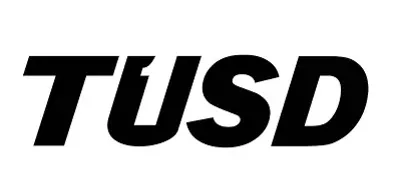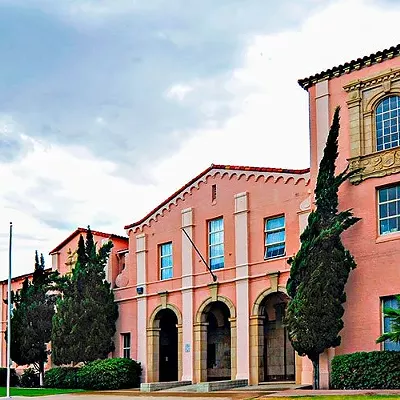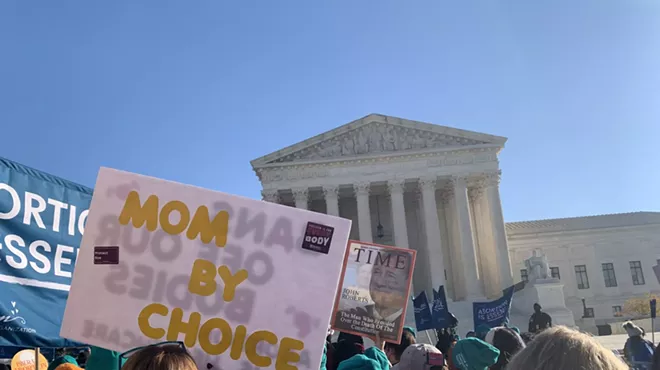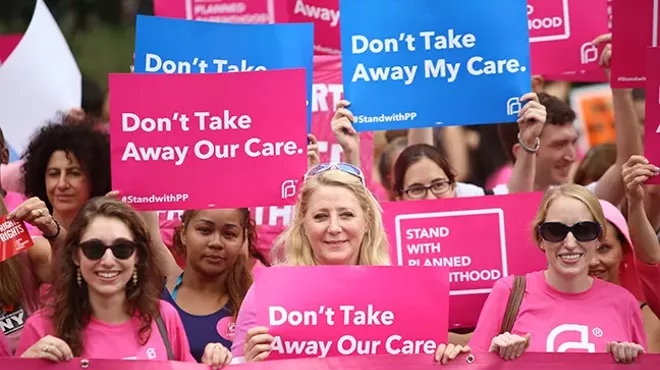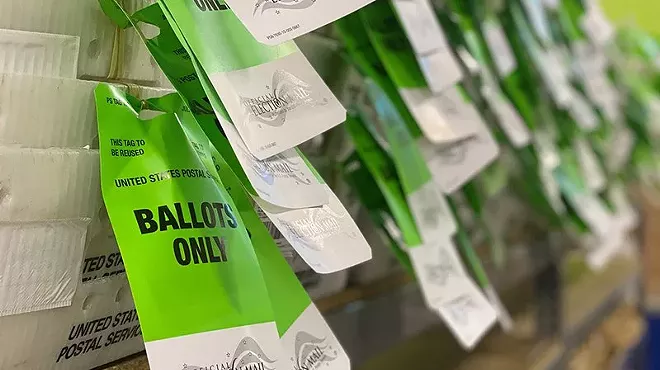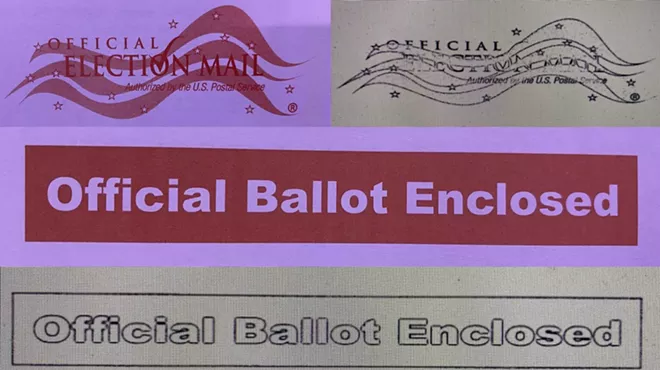Tuesday, July 30, 2019
Who Wins When People Trash TUSD?
Let's put aside arguments about who is most responsible for Tucson Unified School District's declining enrollment and poor test scores. By my lights, the district does a far better job with its students than it is given credit for, but I know others see it as a failing district which has brought its problems on itself.
Instead of arguing about the strengths and weaknesses of the district, let's consider a different question: Who benefits when TUSD is trashed incessantly? Who wins when TUSD loses?
The short answer is, the winners are the enemies of public education. They have spent decades building a multi-billion dollar campaign to make terms like "failing schools" and "government schools" part of our vocabulary. They portray our public schools as a national disgrace, then figure out ways to move as many students as they can into charter and private schools. It began as a conservative, Republican-based effort, but an increasing number of progressives, and even people who consider themselves further to the left than garden variety progressives, have joined in.
It's not surprising to hear people on the political right singing in the anti-TUSD chorus. It's built into their anti-"Big Government,” anti-regulation DNA. If you want to shrink government to the size where it can be drowned in a bathtub as Grover Norquist, a man who never saw a tax or a government program he didn't hate, famously said, getting rid of all those nasty "government schools" makes perfect sense.
But when people on the political left join the chorus and sing, "TUSD is awful, let me count the ways," most of them don't realize that they're being played, that they’re singing a tune out of the conservative playbook. I can almost see the players on the right high-fiving each other every time someone on the left lends the anti-public school cause a helping hand.
Unfortunately, this phenomenon isn’t limited to Tucson. The anti-public school movement has been alarmingly successful at working its way into the national consciousness.
Let me go into more detail about the people who win when people trash our systems of public education.
The Demonizers, Privatizers and Profitizers
Demonize. Privatize. Profitize. Those are the three pillars of the “education reform” movement.
It begins with demonizing our system of public education. Before you can persuade parents of public school students to move their children to charter and private schools, you have to convince them their schools are so bad that anything would be better.
There's nothing new about people criticizing the ways we educate our children or suggesting ways we can improve the educational process. It's been going on as long as we have been a country. Way back in 1819, Washington Irving wrote the classic tale, The Legend of Sleepy Hollow, which featured a pompous, undereducated, incompetent schoolmaster named Ichabod Crane. The story lampoons him and the meager education provided in the one room schoolhouses of the day. Many of our greatest writers have continued Irving's tradition of depicting schools and teachers in less-than-flattering, and sometimes damning, lights. Journalists and educators regularly publish articles and essays describing the problems plaguing our schools and suggesting ways to improve them.
All with good reason. The process of educating young people will always be a flawed enterprise. Criticism and constructive suggestions for change are part of the continuing process of figuring out ways our schools can better serve our children.
But today’s “A pox on all your public schools” style of blanket demonization is a recent phenomenon. Its purpose is not to improve the schools. It is to weaken and eventually dismantle them.
If we’re looking for a moment when the demonization movement began in earnest, it would be the Reagan administration's 1983 publication, A Nation at Risk, which argues that the way we educate our children is so deficient, it threatens our nation’s survival. The pamphlet’s thesis is summed up in its most famous passage, which compares the failures of our schools to an attack by a foreign power.
Yes, replied the demonizers. It really is that bad.
The intensity of demonization has picked up since that first shot across the bow, helped along by some of our wealthiest families, which have spent billions creating what has come to be called the "education reform" movement. Every time we hear about troubled schools and school districts, the demonizers use it as an opportunity to generalize the problem into a plague engulfing the entire system of public education, an epidemic of national proportions. Our schools, they want us to believe, are in their death throes.
Their efforts have been and continue to be successful. The “failing schools” mantra has become part of our national consciousness.
I experienced the devolution of the country’s view of teachers and schools firsthand. For my first 20 years as a teacher, a level of respect was afforded me by friends, and even people I met for the first time, simply because I was a member of an esteemed profession. But starting in the early 1990s, things began to change. Instead of being greeted with respect when people learned I was a teacher, I was eyed with suspicion. I was another one of those failing teachers working in one of those failing schools. I was asked why our schools are doing such a lousy job educating our children. They weren’t accusing me personally. They were expressing a notion that has become common wisdom, that our public schools are failing to educate our children.
Government schools are beyond redemption, the demonizers insist, so why should we throw more money at them? Cash-strapped state legislatures, especially Republican-majority legislatures, agreed and have been more than happy to cut school funding. As a result, underpaid teachers are working in classrooms with too many students and using decades-old teaching materials. The school buildings where they work are deteriorating from lack of repair.
The demonizers point to underfunded schools they helped create and use them as another reason to disparage public education. Things are getting even worse, they say.
That’s the first step, convincing people that our public school system is so badly damaged, it is beyond repair. The next step is to offer an alternative: privatization. If public, government-run schools are a failure, they argue, the obvious solution is to put education into private hands.
At first, the privatizers only had one weapon in their arsenal: private school vouchers. Government-funded vouchers to pay private school tuition came into use in the 1950s, but most of them were localized programs put in place in southern states as a way to allow white students to continue attending segregated schools after Brown v. Board of Education mandated school integration. It wasn’t until the education reformers’ anti-public school message became part of the general discourse that we began to see voucher programs implemented in other parts to the country.
Even then, vouchers have been a limited success. Private schools educate no more than 10% of the population, and most schools attract students because of their religious affiliation. Students in religious schools continue to make up 80% of the country’s private school population.
It wasn't until charter schools began to take hold in the early 1990s that privatization took off. Charters have the advantage of receiving public funding, making the cumbersome system of requesting and receiving individual student vouchers unnecessary. For privatizers, charters are the best of both worlds. The government funds them on a per-student basis, just like school districts, yet the privately-run schools retain a great deal of independence from government rules and regulations. Even though well-funded voucher systems exist in many states, private schools continue to shrink as a percentage of the entire school population. Charters, on the other hand, continue to grow.
Privatization of education is a big win for conservatives. It allows them to create schools in their own image where they can choose curriculum and create rules for student dress and behavior which fit their world view. It shrinks the size and power of government while increasing the size and power of the private sector. It also strikes a blow against powerful teacher unions by pulling teachers away from consolidated school districts and scattering them over an array of disconnected schools, some of which have a mix of credentialed and non-credentialed teachers, making union organizing far more difficult.
Privatization offers another potential win for the education reformers — the ability to make a profit. With 51 million young people attending K-12 schools, education is an untapped market, a gold mine waiting to be exploited. Just think, if you skimmed only $10 off the top from 51 million students, that would be a half billion dollar haul. And that’s just $10 a head. If the people who run charter schools and for-profit private schools make full use of their money-making acumen, they can figure out any number of ways to capture a significant chunk of the $8,000 to $20,000 a year the government pays to educate each student. That’s billions of dollars in potential profit. The possibilities are almost endless.
Profitizing private and charter school education is in its infancy. Thus far they have only been able to siphon off 20% of the total student population. Nonetheless, people who run charters have figured out ways to make serious money. Recently, Arizona state senator Eddie Farnsworth netted $13.9 million from the sale of his charter school chain to friends. Another way charters can turn into cash cows is by creating for-profit charter management organizations(CMOS) which take care of their finances. The schools' government funding disappears when it moves up to the CMOs, allowing the owners to pay themselves high salaries and make lucrative financial deals far from the prying eyes of government auditors and the public.
One of the most notorious examples of turning privatization into profit is K12 Inc., a chain of online charter schools. It is a publicly traded corporation — you can buy stock at $30 a share — which brought in $253.3 million in revenues last quarter and netted $18.5 million in profit.
Making a profit offers an added incentive for the education reform movement. The more demonizing, the more privatizing, the greater the chances for operators of privatized schools to take a cut of the hundreds of billions of dollars spent educating our children.
The Scapegoaters
Scapegoats are valuable tools for people and institutions hoping to avoid responsibility for their actions by shifting the blame. Few institutions fill the role of scapegoat better than our public schools.
If you asked the manufacturing sector in the 1990s why productivity growth was slowing, they would be sure to tell you it's not their fault. “It’s the kids today. They come out of school with no job skills and no work ethic. They’re the ones dragging down production.” Ask today's business leaders why the minimum wage isn’t keeping up with inflation, and they give the same basic answer. “Schools are doing such a lousy job educating our kids, our workers barely deserve the wages we’re paying them.”
Why do African Americans remain at the bottom of the country’s economy? “Look at the schools they go to! If teachers knew what they were doing and taught those kids basic reading and writing skills and a little respect for authority, they would be able to climb the economic ladder like everyone else.” How about poor white families trapped in a cycle of poverty for generations? “Like I said before, it’s the schools.”
It’s the schools. That’s a convenient, all purpose excuse for problems the country’s leaders don’t want to deal with.
Politicians are fond of creating blue ribbon commissions to conduct five year studies when they want to duck an issue. By the time the experts return with their 200 page white papers which no one reads, the country has moved on.
Our schools are even more effective when it comes to deflecting calls for change. You simply blame the schools for the problems and challenge educators to come up with New! Improved! educational strategies. Then you sit back and wait. Everyone knows it takes years for students to work their way through the grades using the new educational methodology before we can hope to see any positive results. Five or 10 years down the line, most of the country has forgotten the reasons the changes were made in the first place. Some people will continue to insist that nothing has changed, that the problems are as bad as ever. The answer to their concerns is, "It's the failing schools! Time for another round of New! Improved! educational strategies. Or, better yet, let's send all those kids in failing public schools to charters and private schools whose owners know how to get the job done."
Who Loses?
Who loses when we trash TUSD and all the other public schools which have been demonized so effectively by the education reform movement?
Children lose. Public schools are more successful when they have enough money to pay teachers the salaries they deserve, provide up-to-date teaching materials for students to use and keep their school buildings in good running order. And they're more successful when they have the respect and support of their communities.
Parents who love their children and want the best for them lose too, of course.
The progressive agenda loses. Efforts by people who want to correct some of the social and economic problems which plague our society, problems which, among other things, lead to children doing poorly in school, are dismissed by conservatives who point their fingers at the public schools as the cause of society's ills.
And when progressives join conservatives in public school bashing, they make efforts for genuine societal reform that much more difficult.
And our country loses. We are in danger of harming one of our finest, most innovative creations, our system of universal, free public education. We put our future at risk if we discard the vision of an increasingly equitable and effective system of schooling and replace it with a balkanized hodgepodge of isolated, privatized schools.
Instead of arguing about the strengths and weaknesses of the district, let's consider a different question: Who benefits when TUSD is trashed incessantly? Who wins when TUSD loses?
The short answer is, the winners are the enemies of public education. They have spent decades building a multi-billion dollar campaign to make terms like "failing schools" and "government schools" part of our vocabulary. They portray our public schools as a national disgrace, then figure out ways to move as many students as they can into charter and private schools. It began as a conservative, Republican-based effort, but an increasing number of progressives, and even people who consider themselves further to the left than garden variety progressives, have joined in.
It's not surprising to hear people on the political right singing in the anti-TUSD chorus. It's built into their anti-"Big Government,” anti-regulation DNA. If you want to shrink government to the size where it can be drowned in a bathtub as Grover Norquist, a man who never saw a tax or a government program he didn't hate, famously said, getting rid of all those nasty "government schools" makes perfect sense.
But when people on the political left join the chorus and sing, "TUSD is awful, let me count the ways," most of them don't realize that they're being played, that they’re singing a tune out of the conservative playbook. I can almost see the players on the right high-fiving each other every time someone on the left lends the anti-public school cause a helping hand.
Unfortunately, this phenomenon isn’t limited to Tucson. The anti-public school movement has been alarmingly successful at working its way into the national consciousness.
Let me go into more detail about the people who win when people trash our systems of public education.
The Demonizers, Privatizers and Profitizers
Demonize. Privatize. Profitize. Those are the three pillars of the “education reform” movement.
It begins with demonizing our system of public education. Before you can persuade parents of public school students to move their children to charter and private schools, you have to convince them their schools are so bad that anything would be better.
There's nothing new about people criticizing the ways we educate our children or suggesting ways we can improve the educational process. It's been going on as long as we have been a country. Way back in 1819, Washington Irving wrote the classic tale, The Legend of Sleepy Hollow, which featured a pompous, undereducated, incompetent schoolmaster named Ichabod Crane. The story lampoons him and the meager education provided in the one room schoolhouses of the day. Many of our greatest writers have continued Irving's tradition of depicting schools and teachers in less-than-flattering, and sometimes damning, lights. Journalists and educators regularly publish articles and essays describing the problems plaguing our schools and suggesting ways to improve them.
All with good reason. The process of educating young people will always be a flawed enterprise. Criticism and constructive suggestions for change are part of the continuing process of figuring out ways our schools can better serve our children.
But today’s “A pox on all your public schools” style of blanket demonization is a recent phenomenon. Its purpose is not to improve the schools. It is to weaken and eventually dismantle them.
If we’re looking for a moment when the demonization movement began in earnest, it would be the Reagan administration's 1983 publication, A Nation at Risk, which argues that the way we educate our children is so deficient, it threatens our nation’s survival. The pamphlet’s thesis is summed up in its most famous passage, which compares the failures of our schools to an attack by a foreign power.
“If an unfriendly foreign power had attempted to impose on America the mediocre educational performance that exists today, we might well have viewed it as an act of war. As it stands, we have allowed this to happen to ourselves. . . . We have, in effect, been committing an act of unthinking, unilateral educational disarmament.”A Nation at Risk took the country by storm. It had people asking, is public education really so bad it poses a risk to our national security?
Yes, replied the demonizers. It really is that bad.
The intensity of demonization has picked up since that first shot across the bow, helped along by some of our wealthiest families, which have spent billions creating what has come to be called the "education reform" movement. Every time we hear about troubled schools and school districts, the demonizers use it as an opportunity to generalize the problem into a plague engulfing the entire system of public education, an epidemic of national proportions. Our schools, they want us to believe, are in their death throes.
Their efforts have been and continue to be successful. The “failing schools” mantra has become part of our national consciousness.
I experienced the devolution of the country’s view of teachers and schools firsthand. For my first 20 years as a teacher, a level of respect was afforded me by friends, and even people I met for the first time, simply because I was a member of an esteemed profession. But starting in the early 1990s, things began to change. Instead of being greeted with respect when people learned I was a teacher, I was eyed with suspicion. I was another one of those failing teachers working in one of those failing schools. I was asked why our schools are doing such a lousy job educating our children. They weren’t accusing me personally. They were expressing a notion that has become common wisdom, that our public schools are failing to educate our children.
Government schools are beyond redemption, the demonizers insist, so why should we throw more money at them? Cash-strapped state legislatures, especially Republican-majority legislatures, agreed and have been more than happy to cut school funding. As a result, underpaid teachers are working in classrooms with too many students and using decades-old teaching materials. The school buildings where they work are deteriorating from lack of repair.
The demonizers point to underfunded schools they helped create and use them as another reason to disparage public education. Things are getting even worse, they say.
That’s the first step, convincing people that our public school system is so badly damaged, it is beyond repair. The next step is to offer an alternative: privatization. If public, government-run schools are a failure, they argue, the obvious solution is to put education into private hands.
At first, the privatizers only had one weapon in their arsenal: private school vouchers. Government-funded vouchers to pay private school tuition came into use in the 1950s, but most of them were localized programs put in place in southern states as a way to allow white students to continue attending segregated schools after Brown v. Board of Education mandated school integration. It wasn’t until the education reformers’ anti-public school message became part of the general discourse that we began to see voucher programs implemented in other parts to the country.
Even then, vouchers have been a limited success. Private schools educate no more than 10% of the population, and most schools attract students because of their religious affiliation. Students in religious schools continue to make up 80% of the country’s private school population.
It wasn't until charter schools began to take hold in the early 1990s that privatization took off. Charters have the advantage of receiving public funding, making the cumbersome system of requesting and receiving individual student vouchers unnecessary. For privatizers, charters are the best of both worlds. The government funds them on a per-student basis, just like school districts, yet the privately-run schools retain a great deal of independence from government rules and regulations. Even though well-funded voucher systems exist in many states, private schools continue to shrink as a percentage of the entire school population. Charters, on the other hand, continue to grow.
Privatization of education is a big win for conservatives. It allows them to create schools in their own image where they can choose curriculum and create rules for student dress and behavior which fit their world view. It shrinks the size and power of government while increasing the size and power of the private sector. It also strikes a blow against powerful teacher unions by pulling teachers away from consolidated school districts and scattering them over an array of disconnected schools, some of which have a mix of credentialed and non-credentialed teachers, making union organizing far more difficult.
Privatization offers another potential win for the education reformers — the ability to make a profit. With 51 million young people attending K-12 schools, education is an untapped market, a gold mine waiting to be exploited. Just think, if you skimmed only $10 off the top from 51 million students, that would be a half billion dollar haul. And that’s just $10 a head. If the people who run charter schools and for-profit private schools make full use of their money-making acumen, they can figure out any number of ways to capture a significant chunk of the $8,000 to $20,000 a year the government pays to educate each student. That’s billions of dollars in potential profit. The possibilities are almost endless.
Profitizing private and charter school education is in its infancy. Thus far they have only been able to siphon off 20% of the total student population. Nonetheless, people who run charters have figured out ways to make serious money. Recently, Arizona state senator Eddie Farnsworth netted $13.9 million from the sale of his charter school chain to friends. Another way charters can turn into cash cows is by creating for-profit charter management organizations(CMOS) which take care of their finances. The schools' government funding disappears when it moves up to the CMOs, allowing the owners to pay themselves high salaries and make lucrative financial deals far from the prying eyes of government auditors and the public.
One of the most notorious examples of turning privatization into profit is K12 Inc., a chain of online charter schools. It is a publicly traded corporation — you can buy stock at $30 a share — which brought in $253.3 million in revenues last quarter and netted $18.5 million in profit.
Making a profit offers an added incentive for the education reform movement. The more demonizing, the more privatizing, the greater the chances for operators of privatized schools to take a cut of the hundreds of billions of dollars spent educating our children.
The Scapegoaters
Scapegoats are valuable tools for people and institutions hoping to avoid responsibility for their actions by shifting the blame. Few institutions fill the role of scapegoat better than our public schools.
If you asked the manufacturing sector in the 1990s why productivity growth was slowing, they would be sure to tell you it's not their fault. “It’s the kids today. They come out of school with no job skills and no work ethic. They’re the ones dragging down production.” Ask today's business leaders why the minimum wage isn’t keeping up with inflation, and they give the same basic answer. “Schools are doing such a lousy job educating our kids, our workers barely deserve the wages we’re paying them.”
Why do African Americans remain at the bottom of the country’s economy? “Look at the schools they go to! If teachers knew what they were doing and taught those kids basic reading and writing skills and a little respect for authority, they would be able to climb the economic ladder like everyone else.” How about poor white families trapped in a cycle of poverty for generations? “Like I said before, it’s the schools.”
It’s the schools. That’s a convenient, all purpose excuse for problems the country’s leaders don’t want to deal with.
Politicians are fond of creating blue ribbon commissions to conduct five year studies when they want to duck an issue. By the time the experts return with their 200 page white papers which no one reads, the country has moved on.
Our schools are even more effective when it comes to deflecting calls for change. You simply blame the schools for the problems and challenge educators to come up with New! Improved! educational strategies. Then you sit back and wait. Everyone knows it takes years for students to work their way through the grades using the new educational methodology before we can hope to see any positive results. Five or 10 years down the line, most of the country has forgotten the reasons the changes were made in the first place. Some people will continue to insist that nothing has changed, that the problems are as bad as ever. The answer to their concerns is, "It's the failing schools! Time for another round of New! Improved! educational strategies. Or, better yet, let's send all those kids in failing public schools to charters and private schools whose owners know how to get the job done."
Who Loses?
Who loses when we trash TUSD and all the other public schools which have been demonized so effectively by the education reform movement?
Children lose. Public schools are more successful when they have enough money to pay teachers the salaries they deserve, provide up-to-date teaching materials for students to use and keep their school buildings in good running order. And they're more successful when they have the respect and support of their communities.
Parents who love their children and want the best for them lose too, of course.
The progressive agenda loses. Efforts by people who want to correct some of the social and economic problems which plague our society, problems which, among other things, lead to children doing poorly in school, are dismissed by conservatives who point their fingers at the public schools as the cause of society's ills.
And when progressives join conservatives in public school bashing, they make efforts for genuine societal reform that much more difficult.
And our country loses. We are in danger of harming one of our finest, most innovative creations, our system of universal, free public education. We put our future at risk if we discard the vision of an increasingly equitable and effective system of schooling and replace it with a balkanized hodgepodge of isolated, privatized schools.
Tags: David Safier , TUSD , Charter schools , Private schools , Education reform movement , Charter management organizations. , Image


